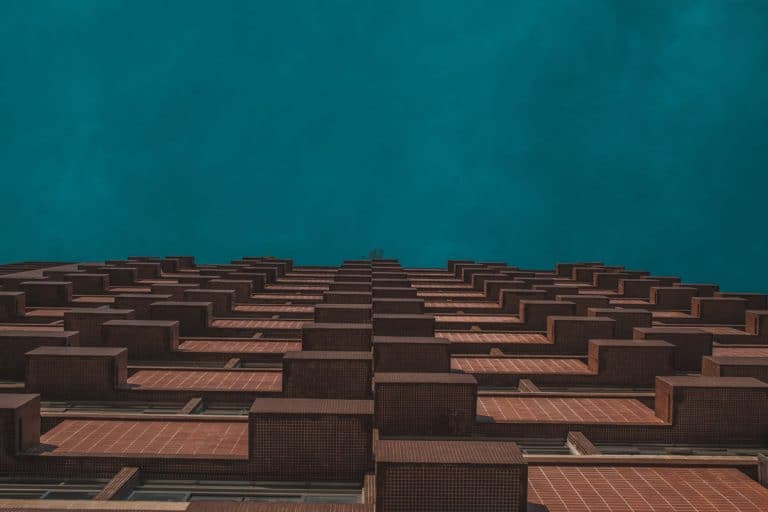AI planners in Minecraft might be leading the way we design future cities

Advancements in artificial intelligence (AI) are leading us towards a very likely future where machines reason, learn and act intelligently like we do—but not as we do. For other than obvious reasons, this will change the way we live and transform how we physically live as well as what our cities look like on a grand scale. Using the interior world of games for inspiration, the game Minecraft in particular has driven AI researchers to look at the way its players strategically invent their worlds.
What is Minecraft?
Minecraft is a game developed in Java (a class-based, object-oriented programming language that is designed to have as few implementation dependencies as possible) by Mojang Studios. It is the best selling game of all time. The purpose of the game is to simply build a procedurally-generated 3D world with infinite terrain with the option to craft your own tools and to explore and survive while doing so.
The game noticed the innovative design skills that were being produced by gamers while playing, and launched the annual competition called the Generative Design in Minecraft (GDMC) in 2018. This competition, which is first and foremost just for fun asks participants to build an AI system that can generate entire Minecraft villages by themselves. Pretty straightforward, right? Write an algorithm that can create its own settlement, easy.
As the competitions run on, it is becoming increasingly clear that the techniques explored by competitors are suited to ways in which real cities could be designed in the future. The challenge of building these complexes are based on very real problems that we come across when planning a city’s existing geometric space on earth. The settlements take climate and human needs into consideration such as roads, facilitated mobility accessibility, stairs and the list goes on—beyond that, culture and identity come into play too.
Minecraft GDMC specifics
Naturally, there are functional requirements when it comes to building an entirely AI-generated structure. Entrants can take on a new or existing map within the Minecraft universe, and then modify it using the algorithm designed. To do this, GDMC relies on a popular save game editor for the Java version of Minecraft called MCEdit, which allows the use of filters or commands that apply specific behaviours over chosen sections of your Minecraft map.
You’re not totally alone though, there is a sample bot here to get you going that uses Binary Space Partitioning to break up lots, which recursively divides a scene using hyperplanes into two until the partitioning satisfies one or more requirements. It can be viewed as a generalisation of structures to create three-dimensional scenes composed of polygons. Bit by bit my dears, Rome wasn’t built in a day as they say.
Once you’ve implemented your instructions, the filter or generator needs to run for no more than ten minutes to build its structure onto three test maps selected by the organisers. You will then be scored from one to ten on four categories; adaptation (does it respect the environment?), functionality (how easy is it to move within and around the space? Is it protective?), evocative narrative (is there a sense of story to the people who may live in the structure?), and aesthetics (is it appealing to look at?).
Real life AI implementation
Jasper Wijnands and his colleagues from the University of Melbourne in Australia are exploring the use of generative adversarial networks (GANs) to do a style transfer on images from Google Street View. Style transfers are mainly used to reproduce one image into the style of another, but instead of a style Wijnands programmed his AI system to recognise how public health data varies visually from city block to city block.
For example, where neighbourhoods had positive public health, he asked his software to reproduce similarities from the healthier neighbourhoods onto the less healthy neighbourhoods. City planners could then use where the system applied the transformations and be guided by the information noticed to improve the urban environment.
There are many other researchers analysing the potential benefits of the use of AI-generated suggestions and programmes when it comes to urban planning and construction, but they all have the same elements in mind that Minecraft does. The data collected using systems like these also have a ripple effect within design, such as improvement in cartography and behavioural understanding.
Arnaud Grignard and his colleagues at the MIT Media Lab use agent-based simulation to explore possible designs for busy public spaces. One project included redrawing the boundaries of New York boroughs based on the similarities between neighbourhoods, resulting in the concentric rings around central Manhattan. As commented on by the AI practitioners Topos, this is evidence that geography reasserts itself as the organising principle. Although humans have already started looking into ways new technologies can help us improve our homes, there is still much to learn from what we miss when designing, and AI could help us gain a more informed and granular understanding.




